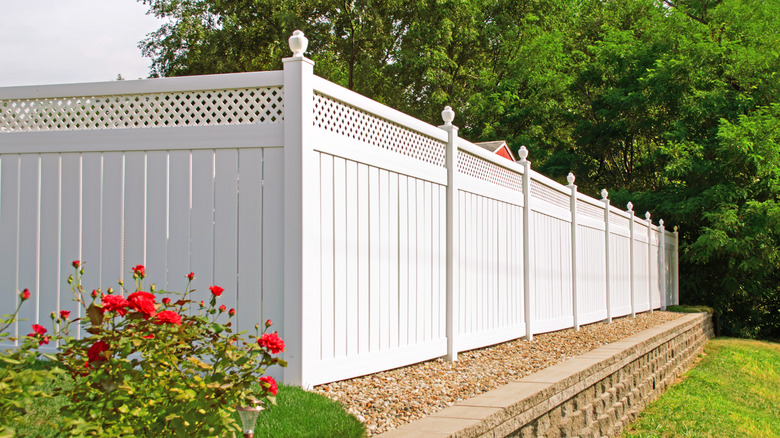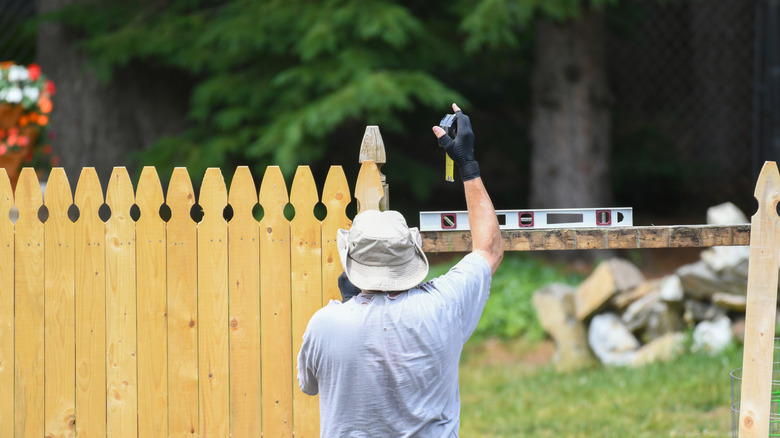Wood Vs Composite Fencing: A Comparison Of The Price
It seems like most home improvement projects that involve using wood boil down to a simple question: is traditional wood more effective and cheaper than newer alternatives? When discussing the best fencing materials for your family's lifestyle, wood and composite seem to stand out as top choices for their durability and versatility around a space. If pricing is the deciding factor for your fencing installation process, understanding the cost differences between these materials can help you make an informed decision about the longevity and expenses that might accompany a newly installed fence around your home. Generally speaking, you're likely going to pay more for a composite fence than a wood one.
While wooden fencing is a budget-friendly option compared to composite fencing, the prices vary depending on installation costs and the type of wood you're planning to use. Typically, the cost of wooden fencing ranges anywhere between $10 and $30 per linear foot, including materials and labor. Pine is often the most affordable option as it costs $1 to $5 per linear foot of material. If you're looking for a more durable option, you can go with cedar fencing as it is naturally resistant to pests and decay. Cedar will cost around $14 to $28 per linear foot of material. Wood fences do require regular sealing and staining to maintain their appearance and durability, which can increase the cost of your fencing over time. Additionally, treated wood is available as a fencing material, but the price range will also increase as a result.
Types of composite fencing
Composite fencing can quickly elevate the curb appeal of your home, and is made out of recycled plastic and wood. It typically comes in three different variations: picket, privacy, and premium. The cheapest option for composite fencing is the picket variant, which will run you around $11 to $15 per linear foot. This material is often only 3 to 4 feet tall, making it an excellent addition for compact yards or creating a necessary boundary for plants, children, and pets. However, this price point does not include the cost of additional features that might accompany your composite fence, like gates (between $200 to $400, including labor).
If you'd like a bit more seclusion, it might be a worthwhile investment to spring for privacy composite fencing. Often created using larger panels of fencing material, this type provides the necessary height to completely enclose your outdoor spaces. Privacy fencing can be the perfect way to introduce a durable barrier between you and your neighbors, and will cost anywhere between $22 to $34 per linear foot – making it more expensive than traditional wooden material. But with the added benefit of solid paneling, it can turn any outdoor space into a blissful oasis for your home.
The third type of composite fencing — and the most expensive — is premium. Whether you want an intricate lattice design or just a higher quality material, this fencing is the most expensive composite option, costing between $28 to $45 per linear foot, including labor. Specialty designs can increase that price point significantly, and largely depends on the desired fence style that best suits your home's exterior.
Pros and cons of each material
In addition to the differing price points between wooden and composite fencing, each is accompanied by a number of pros and cons. Wooden fencing is an ideal pick for homeowners looking for a stress-free, DIY installation. It can also be treated to withstand harsh outdoor environments, increasing its durability. The traditional look of wooden fencing can seamlessly blend into any landscape and architectural style, as it is able to be painted or stained to further match the exterior of your home. However, the durability of wood doesn't stand up that well when compared to composite. It is susceptible to cracking, warping, and breaking, which may require frequent replacements. As a cheaper fencing material, it won't be an expensive replacement task, but the costs may quickly add up over time.
On the other hand, composite fencing comes with its own set of advantages and disadvantages. One of the key benefits of this material is that composite fencing is entirely resistant to rotting, pests, and moisture. Since the material isn't prone to warping or splitting when properly installed, composite fencing is also able to retain its appearance with limited maintenance. While the most notable drawback of installing composite fencing is the high price point, there are also a couple other cons: Despite the enhanced durability, composite fencing may be prone to expansion and contraction during significant weather changes, but warping or cracking should not be an issue. Additionally, composite fencing is also known to fade over time, and may require additional panel replacements to achieve its original look.


